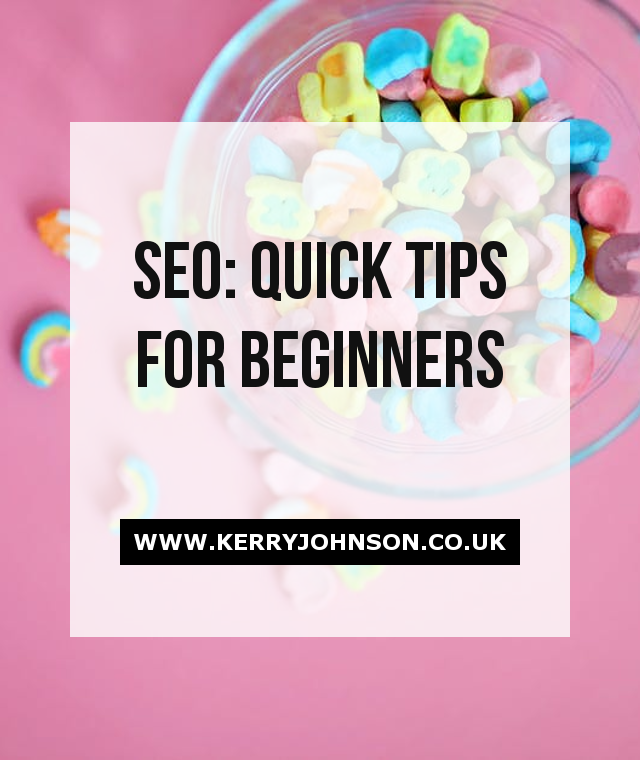Search engine optimisation (SEO) is a set of activities carried out to improve the search engine ranking of your website. The higher your site ranks, the closer to the top of the organic search results it will appear. Generally, the websites near the top of search results receive the most traffic.

Search engines work by ‘crawling’ websites and indexing content based upon their findings. The crawlers recognise only the text, or code, of your page and do not see images. There are several things you can do to improve your SEO and, in turn, your search engine ranking.
Keywords and Phrases
Every page and blog post on your website should have its own keyword or phrase. This is the word and/or phrase that you want the page to be indexed with, and is usually the main topic. For example if you are writing a post about your favourite WordPress plugins, your keyword might be either ‘WordPress’ or ‘plugins’.
Determining your keywords will help to ensure that search engines are indexing your page or article in the right areas. When someone searches ‘what WordPress plugins should I use?’, for example, all pages that include these keywords will be among the results.
When including keywords in your content, you should place them strategically. Only use them in places where they sound natural and flow with what you are writing. If your keyword density is very high, and they are placed unnaturally, you could be penalised for over-optimising and your site will rank poorly.
Meta Description
A meta description is a snippet that summarises the content of a page or post. This is displayed in search engine results, when the searched word or phrase is in the description. For this reason, the meta description is a vital place to include your keywords or phrase. You should try to use between 150 and 160 characters.
To add a meta description to your page, you should include the following code between the <head> tags.
<meta name=”description” content=”meta description here” />
Use Heading Tags
Heading tags are represented in HTML by h1-h6. H1 should be used for your page or post title only. When a search engine is crawling your page, looking for content, the first thing that it will go to is your h1 tag. This is the reason I try to include my keywords within the post title (and the h1 tag). It also gives your reader clear information as to what they should expect from your page.
Once the search engine has located the h1 tag, its next go-to tag is h2. Think of this as a subheading to your h1 title. If your keywords fit naturally into a subheading, use them. However, you should not force their use, causing your writing to become unnatural. Search engines work through the heading tags in chronological order: h1-h6
Content Introduction
Many blog posts include an image, which usually either details or closely relates to the post subject, and is used to index the post on Pinterest and social media. However, this should not be the first thing within your post.
As search engines crawl pages, they first look for written content, rather than images. Therefore, it is important to write your introduction before you add any images. This does not need to be lengthy, but should include relevant information to your post subject and, if possible, should include your keywords or phrase.
Images: URL and ALT Text
When adding images to your post, ensure that they have appropriate names, so that the URL is search engine friendly. For example, if crawlers locate the following URL, there is no relevance to your post or subject.
yoursite.com/img002.jpg
Instead, you should ensure that your file is renamed before uploading, so that your URL is more like the following:
yoursite.com/seo-tips.jpg
It is clear from the URL of this image (which is what search engines will locate, rather than the image itself) that it is related to SEO. You should ensure that all images on your pages are like this.
You should also ensure that you include alt text for every image. Here is how to do so:
<img src=”yoursite.com/seo-tips.jpg” alt=”SEO Tips” />
Remember, search engines crawl the text that makes up your webpage coding. For this reason, you should include your keywords or phrase in your image alt text.
URL / Permalink
The permanent link to your page or post. This should include keywords and be clear of any stop words. Stop words are those which are filtered out before or after processing of natural language data (text). This includes words such as a, the, for, has, in, was etc.
An appropriate permalink for a post named ‘Wordpress Plugins I Use For My Blog’ would be:
yoursite.com/wordpress-plugins-blog/ or simply yoursite.com/wordpress-plugins/
Internal Links
Not only is linking internally good for search engine optimisation, it is also a great way to drive traffic to your older content that may, for any reason, become lost in the archives.
When a search engine discovers links to your site, it takes this is a recommendation. ie. Someone is recommending that a visitor should check out your site. A recommendation from a reputable website is indexed by search engines. (So if you ever write a guest post for anyone, be sure to ask them to link back to your site.)
By interlinking your posts and pages, you are creating your own ‘buzz’. The more links to your site that search engine crawlers discover, the more likely you are to be ranked higher in search results.
